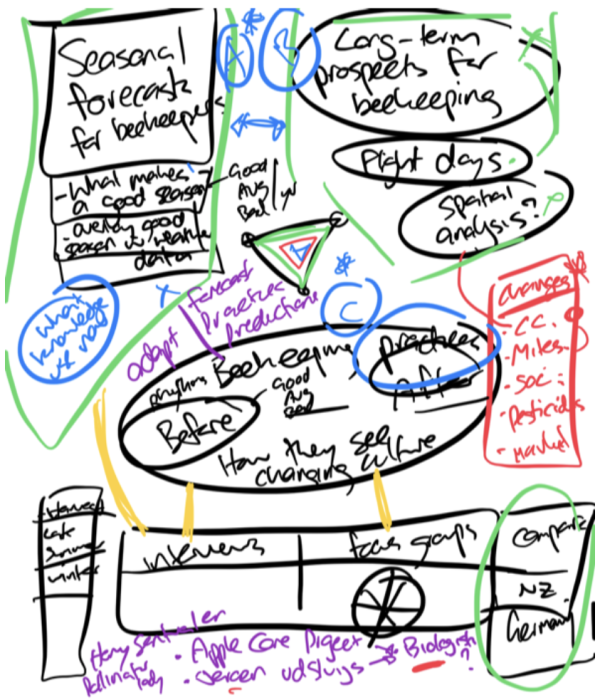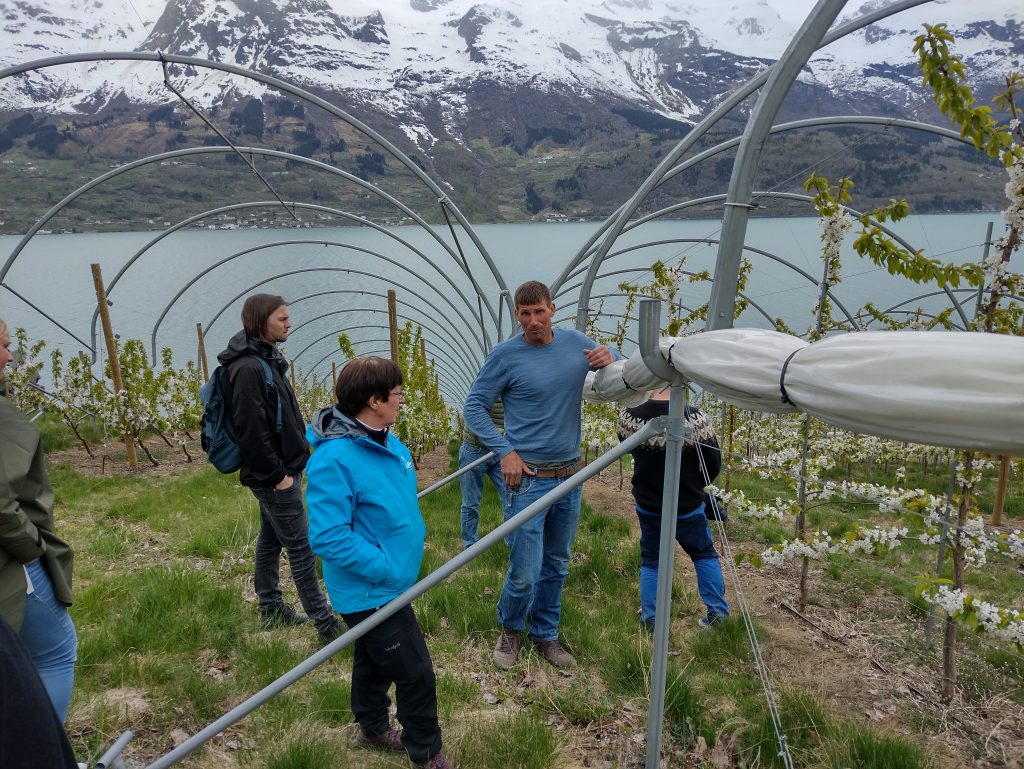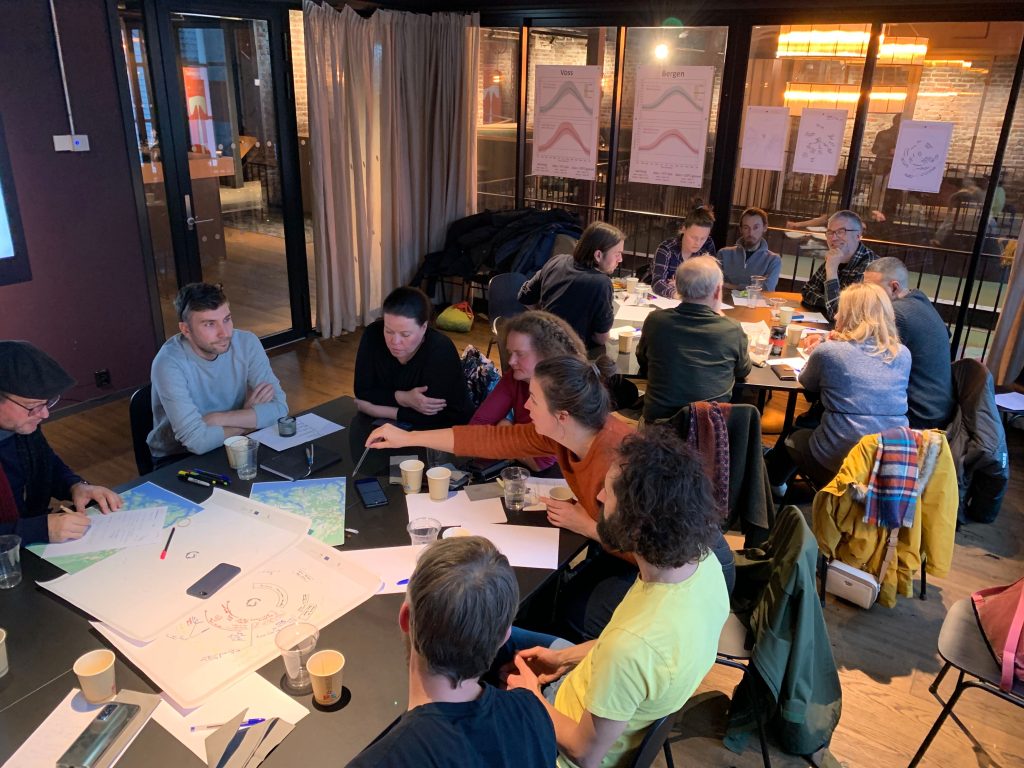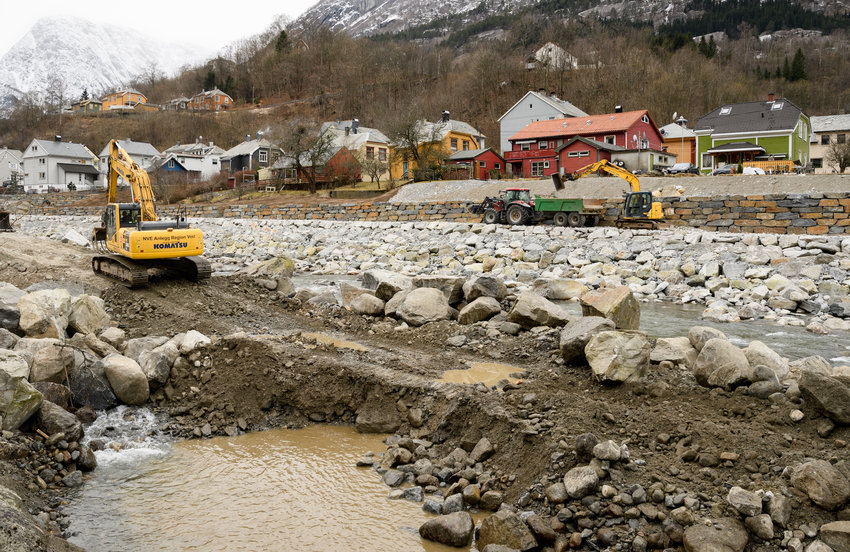Norway’s largest beekeeping conference was held in Voss in the end of October once the beekeepers were done settling in their bees for the winter.
Alf-Helge, awarded Norway’s beekeeper of the year in 2021, and teacher to hundreds of hobby and commercial beekeepers, was tasked with summarizing the latest beekeeping year. Up on the screen he showed plots of temperature throughout the year and compared them to the weight of his hives. When the temperature rose above 20 degrees, so did the weight, filling up the hives with honey. In between were long cold and wet periods, where the weight barely rose at all, or decreased as the bees ate through their supplies. The short periods of warmth were linked to the explosive blooming-of nearby wild raspberries and heather, and the rise in hive weight with the frenzied harvesting of nectar by the bees. Alf Helge’s presentation highlighted the close connection between beekeeping and weather, and consequently, their vulnerability to climate change. This was further emphasized by the 200-year flood that hit Voss two weeks later, flooding the same room where the conference was held for the second time in just a few years.
Climate change is expected to impact honey bees directly by modifying their foraging and breeding patterns, but also indirectly through changes in their environment such as the timing of plant blooms. These factors impact a sector already under pressure due to the application of insecticides, parasite infestations and widespread habitat loss, and have knock-on effects on the closely related agriculture sector: The value of pollination, mainly by bees, is over $200 billion/year worldwide, providing an estimated 35% of the food we eat. In Vestland, pollination services provided by local beekeepers are important in the Hardanger region, which produces 40% of all Norwegian fruit. Yet, despite clear evidence of climate risk, there exists surprisingly little published research on how climate impacts the practice of beekeeping, what practices and technologies are deployed to mitigate climate risk, or how climate services could support these practices.
«BeeWare», a 1-year spinoff project by researchers from Climate Futures at NORCE and the EU-funded projects CALENDARS and CANALS at UiB, is addressing these questions by investigating how weather and climate risk – amplified by climate change – are challenging beekeeping in the Vestland region. As does sometimes happen in science, the idea originated from a chance encounter over lunch, where we chatted about climate and beekeeping, and ended up sketching ideas that eventually became the project (Fig. 1). «BeeWare» takes a transdisciplinary approach combining the varied skill sets and points of view of experts in climate science (Etienne Dunn-Sigouin), food systems (Manuel Hempel), climate adaption (Scott Bremer) and climate ethics (Simon Meisch). Our team also leverages Manuel’s role as a well-known beekeeper in the Norwegian beekeeping community, giving the project a rare opportunity to garner significant participation and put results into practice.

«BeeWare» is split into three phases. In the first, over 20-hours of recorded interviews were conducted with beekeepers to determine how weather, climate and other non-climate related factors impact their practices throughout the year. These conversations encouraged us to discuss our initial findings at Norway’s largest beekeeping conference in Voss, and during the Hardanger pollination day seminar, where beekeepers and farmers met to discuss pollination services (Fig. 2). In the second phase, focus groups were conducted with beekeepers once a month over the entire year to evaluate the use of extended range forecasts to reduce current climate risk. Then, drawing on the interviews and focus groups, insights from beekeepers were compared to regional climate projections to provide actionable information on mitigating future climate risk. Finally, in the third phase, a one-day workshop at kulturhuset in Bergen was held with beekeepers to identify useful knowledge and practices for managing climate risk in Vestland (Fig. 3). The participants were asked to draw a common calendar of their practices and reflect on how these practices have changed in the past, and how they anticipate them to change in the future. These formed the backdrop of our discussion on adapting to the changing landscape of climate and non-climate related factors, with strategies ranging from using extended range weather forecasts for planning, to building «bee» houses for protection against the elements.

One year after our chance lunch meeting, we’re now writing up our results for submission to academic papers, but also to outlets accessible to beekeepers. We aim to disseminate our results in Birøkteren, Norway’s national beekeeping magazine read by over 4500 members of Norges Birøkterlag, as well as next year’s beekeeping conference in Voss. In this way, we hope to motivate a broader conversation around beekeeping, agriculture, and climate change in Norway and more widely. Although relatively niche, the «BeeWare» project highlights a critical point at the heart of Climate Futures, CALENDARS and CANALS. Climate adaption is a collaborative process, and neither those adapting, nor the scientists, are likely to solve these problems alone. Extended conversations between scientists from different fields, scientists and beekeepers, and amongst beekeepers themselves, were necessary to see different perspectives, understand the problems, and find innovative and (hopefully) useful solutions. Scientifically, pushing ourselves to move beyond our narrow fields, such as challenging a climate scientist to conduct interviews or a social scientist to analyze weather forecasts, was a truly informative experience. The most interesting and important problems are often at the interface of different fields, and tackling these problems are key to making society more resilient to a changing climate.

Written by: Etienne Dunn-Sigouin, Manuel Hempel, Scott Bremer, Simon Meisch

